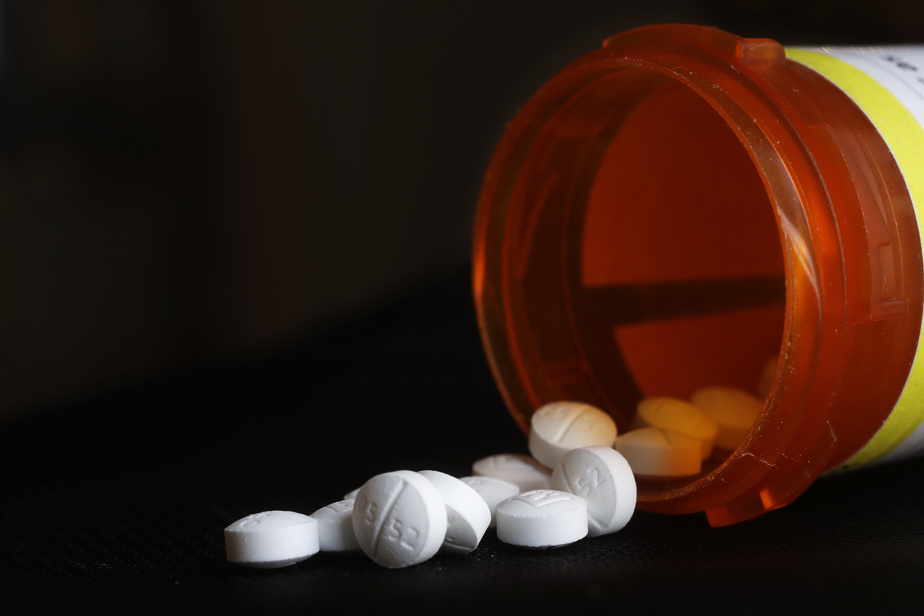(Cincinnati) The pills prescribed to Lee West after his motorcycle accident were supposed to help soothe his damaged wrist. But it wasn’t enough to ease his pain. His dose was increased, little by little.
“The doctors continued to prescribe it to me, I took more and more, until my life became unmanageable,” says the 45-year-old former mover. I no longer went to work. I lost my job. I found myself on the street. »
He shares his story in front of the Sunstone Life townhouses. The organization can house up to 50 ex-drug addicts in its red brick buildings in a residential area of Greater Cincinnati, Ohio.

PHOTO JANIE GOSSELIN, THE PRESS
Lee West
Sober for six months, Mr. West was able to benefit from free rental for three months, financed thanks to national agreements concluded in 2021 and 2022 between the States and various players in the pharmaceutical industry.
50 billion
Companies like Johnson & Johnson, Teva, Walmart and Walgreens will have to pay some $50 billion over 18 years to state and local governments for their role in the opioid crisis. The funds will then be distributed to different projects: addiction prevention programs, treatment centers, purchase of naloxone, for example.
Ohio ranked second pre-pandemic in U.S. overdose rate, according to the Journal of Addiction Medicinemust receive 2 billion US.
Sunstone Life received just under US$60,000 from the local county under this scheme this year. The money allowed around twenty people to obtain free accommodation in one of the non-profit organization’s houses.
“It definitely helps us,” Ray Compagna, co-founder of Sunstone Life, comments over the phone.
Without subsidies, it costs around $30 a day to get a bed in one of the two-story furnished houses, where up to five people can live.
Reintegration
“We think that if we can offer them a free roof for 90 days, with a commitment to work to get tools [comme une formation pour la réinsertion d’emploi]it’s the winning formula,” says Kelli Achberger, who works on site with her colleague, Vivian Sickinger.
In one of the units, a frame hung above one of the two single beds in a bedroom on the upper floor serves as a reminder that “difficult roads often lead to great destinations.” In the living room on the ground floor, another invites “kindness above all else”.
Aged 43, Mme Achberger experienced the opioid crisis firsthand: she was prescribed painkillers about twenty years ago, in one of those clinics well known to addicts, where doctors prescribed powerful drugs without proper consultation , she says in her hoarse voice. An illegal practice repeatedly denounced as an aggravating factor in the crisis.
Measures to prevent addicts from powdering oxycodone tablets have not slowed down the dark-haired woman, who has been sober for nine years.

PHOTO JANIE GOSSELIN, THE PRESS
Kelli Achberger of Sunstone Life
When they started making pills that you couldn’t snort, I did like everyone else and switched to heroin.
Kelli Achberger of Sunstone Life
The organization does not offer medical care, but requires its tenants to comply with certain rules and follow their treatments. They are subject to random urine tests.
Waiting
As of this writing, Sunstone Life is still waiting to hear whether it will receive new requested funds.
Most of the money awarded annually to Ohio under the out-of-court settlement has not yet been paid. The nonprofit OneOhio Recovery Foundation was established to distribute 55 percent of the funds awarded to Ohio, with the remainder managed by local and state governments.
He announced on Wednesday some of the projects selected in his first appeal to distribute the funds.
Delays in the process infuriate Dennis Cauchon, a former journalist who founded Harm Reduction Ohio to advocate for the rights of drug users. “It’s very governmental, it’s long, the people at the foundation spend their time in procedures and paperwork, and the money is not paid,” lamented Mr. Cauchon, reached by telephone last month. ‘august.
Harm Reduction Ohio filed a lawsuit against OneOhio in 2022, demanding more transparency. Everything was settled amicably.
If organizations like his are concerned about transparency, it is in particular because of the US 246 billion agreement with tobacco producers in 1998; funds have not always been used to combat smoking, explains Mr. Cauchon.
“There are groups doing incredible things with almost no resources,” he adds. I really hope that they can get some of the money from the agreement, these people who are really working on the ground. »
With The Canadian Press
And here?
Last April, the Superior Court of Quebec authorized a class action against 16 pharmaceutical companies, accused of having misled patients about the effectiveness and dangers of their medications containing opioids. It does not include OxyContin and OxyNEO, the subject of a $20 million pan-Canadian settlement approved in November 2022.
